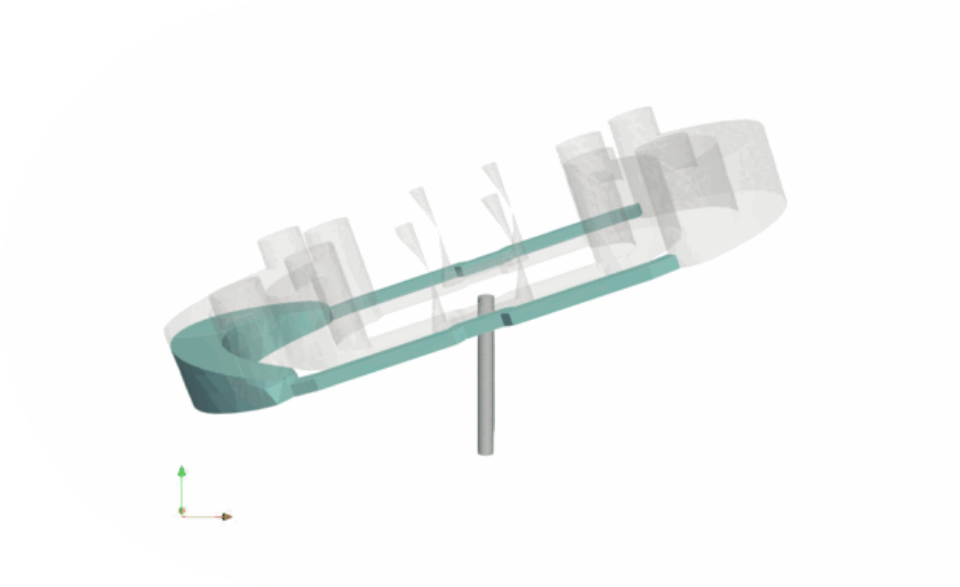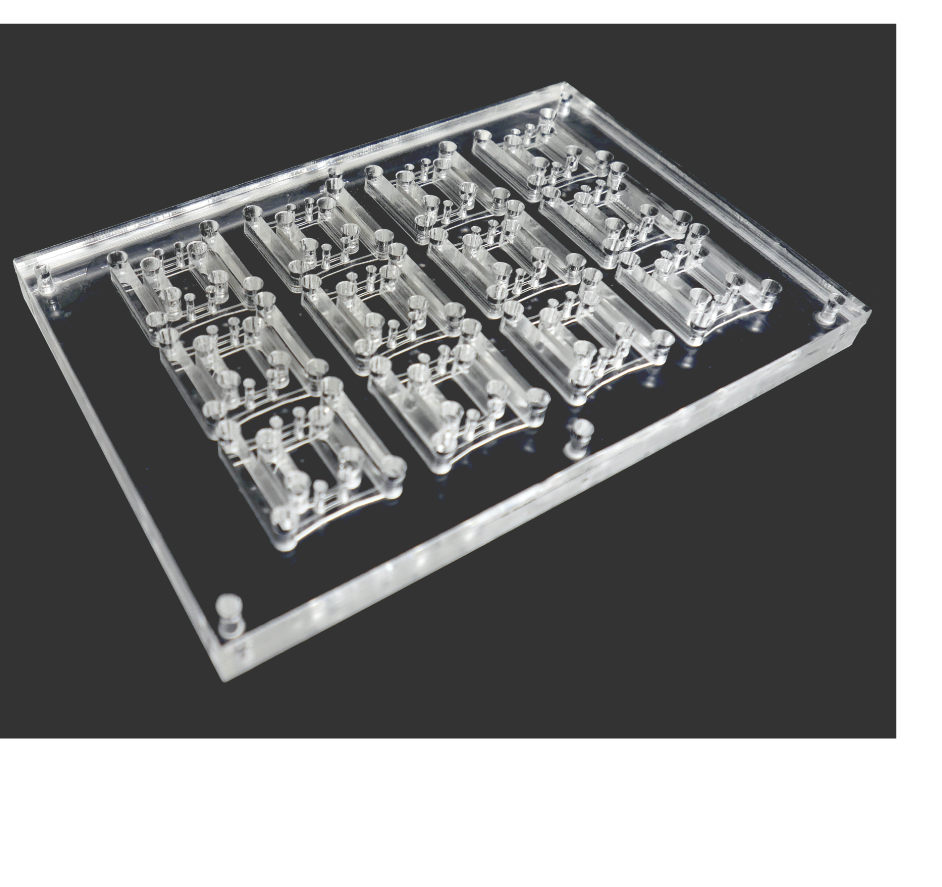TECHNOLOGY
How to build physiologically relevant, advanced in vitro human models
in an easy and scalable way?
CELLSPACE provides a next-generation micro-physiological system platform technology for disease modeling and drug testing.
Our technology is based on a patented fluidic layout combined with
a 3D tilting apparatus to produce a directed gravity-driven flow without the need for pumps and tubes.
The platform enables the functional culture of multiple 3D organ models, endothelial cells, and the integration of circulating cells or particles. All these elements can be coupled together in different combinations in one microfluidic device, allowing the development of complex tissue and organ representations and advanced disease models.
Our pump-less approach still ensures high scalability and user-friendliness for drug discovery and drug testing in both academic and industrial R&D laboratories.


MPS Assay
CANCER ON CHIP
- Co-culture of 3D primary Tumor and liver organoids (secondary site)
- Vascularization model
- Membrane-free endothelial barrier for
intravasation /extravasation - NK-mediated killing assay
- Possibility to incorporate immune components

MPS Assay
IMMUNE CHIP
- Stable viability
- No activation
- No trapping
- Migration following a gradient of chemokines
- Interaction with organoids
- Extravasation
- No pumps needed
- High scalability
- User-friendly
- Life-cell imaging
- PDMS-free (no drugs absorption
- IP: National phase in December 2023

MPS assays
METABOLISM ON CHIP
- Long-term functionality and viability of organoids
- Functional cross-talk between
pancreas and liver models - Reproducible disease phenotype
- Suitable for drug testing
- Possibility to incorporate vascular
and immune components

MPS platform
MICROFLUIDICS
Pump-less revolving organ on chip ( OoC ) platform that addresses central shortfalls of the OoC field in a robust and scalable configuration
- Supports multiple 3D organ models, blood vessels and circulating cells (e.g. immune cells)
- Generates directional flow without pumps
- Plate and single chip format
- Designs optimized for different organ models
- Compatible with automated pipetting robots
- No pumps needed
- High scalability
- User-friendly
- Life-cell imaging
- PDMS-free (no drugs absorption)
Single-use rOoC chips are available in different layouts, optimized for different organ models and biological questions. rOoC chips are shipped in a sterile, ready-to-use bag as single chips or as array of several rOoCs in the well plate format. We currently offer following rOoC layouts:
Single-Loop | Loop-in-Loop | Infinity-Loop |
Combination of two large organoid/cell chamber in one perfusion loop | Combination of two smaller organoid chambers placed between two independent perfusion loops | Incorporates a membrane between two separate perfusion loops. Each loop include one organoid chamber. |
Suitable for demanding or big organoids, vascularization and immune infiltration | Suitable for applications that require gradient formation, for studying immune infiltration and vascularization and organ interaction | This unique layout adds an endothelial/epithelial barrier between both loops thus adding the option to study drug or immune cell transport/adsorption. |
We also provide a customized tilting system to run the devices. Please contact us for more information and pricing.


Product
Loop-in-Loop layout
The Loop-in-Loop layout adds a second perfusion channel loop and places two organ chambers between them. By adding a second perfusion loop, gradients can be generated and maintained within the organ chambers making this layout suitable to study vascularization, immune interaction, organogenesis, or cross-organ interaction. rOoCs with this layout are available:
a. Single chips (40×30 mm) fitting into a rectangular 8-Well plate.
b. Multiwell chips featuring 12 independent rOoCs at the footprint of a standard well and compatible with the 384-well grid layout for automated media exchange using a pipetting robot.
Product
Loop-in-Loop layout
The Loop-in-Loop layout adds a second perfusion channel loop and places two organ chambers between them. By adding a second perfusion loop, gradients can be generated and maintained within the organ chambers making this layout suitable to study vascularization, immune interaction, organogenesis, or cross-organ interaction. rOoCs with this layout are available:
a. Single chips (40×30 mm) fitting into a rectangular 8-Well plate.
b. Multiwell chips featuring 12 independent rOoCs at the footprint of a standard well and compatible with the 384-well grid layout for automated media exchange using a pipetting robot.
Single-use rOoC chips are available in different formats and configurations, optimized for organ models and biological questions. rOoC chips are shipped in a sterile, ready-to-use bag in different layouts

Product
Loop-in-Loop layout
The Loop-in-Loop layout adds a second perfusion channel loop and places two organ chambers between them. By adding a second perfusion loop, gradients can be generated and maintained within the organ chambers making this layout suitable to study vascularization, immune interaction, organogenesis, or cross-organ interaction. rOoCs with this layout are available:
a. Single chips (40×30 mm) fitting into a rectangular 8-Well plate.
b. Multiwell chips featuring 12 independent rOoCs at the footprint of a standard well and compatible with the 384-well grid layout for automated media exchange using a pipetting robot.
Single-use rOoC chips are available in different formats and configurations, optimized for organ models and biological questions. rOoC chips are shipped in a sterile, ready-to-use bag in different layouts

TEAM
Management Team

Dr. Mathias Busek
Technical Dev

Dr. Aleksandra Aizenshtadt
Model Dev

Prof. Stefan Krauss
Advisor
Scientific Team

Dr. Mathias Busek
Model Dev

Chengcheng Wang
Model Dev

Mikel Amirola Martinez
Model Dev

Alexey Golovin
Technical Dev
ADVISORY BOARD

Dr. Hanna Scholtz
Regenerative Med.

Tom Pike
Pharma Industry

Ken Rosendal
BD

